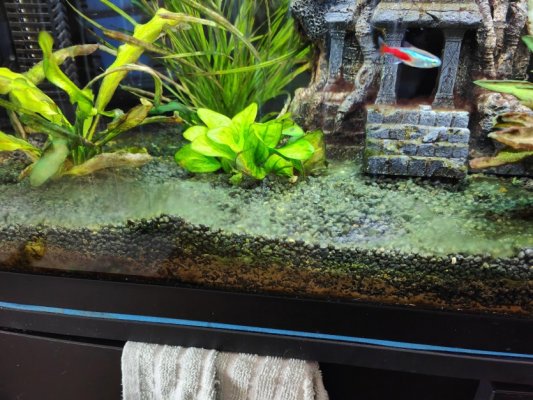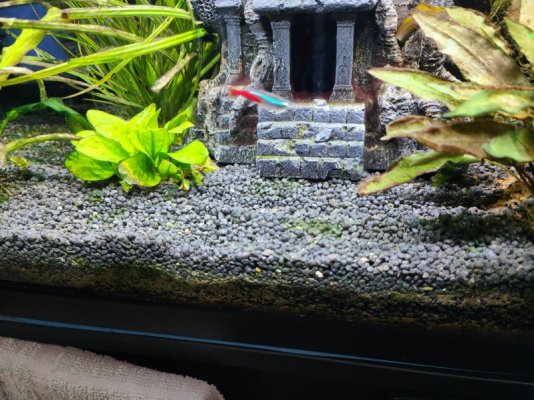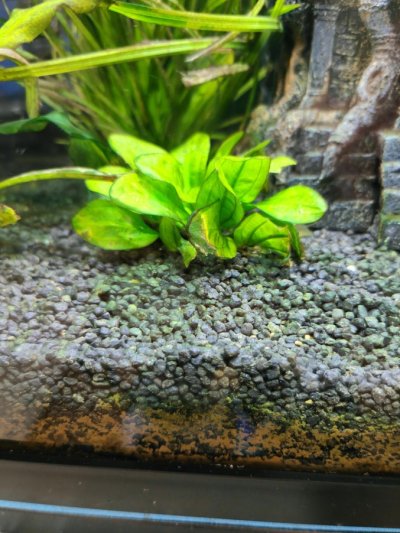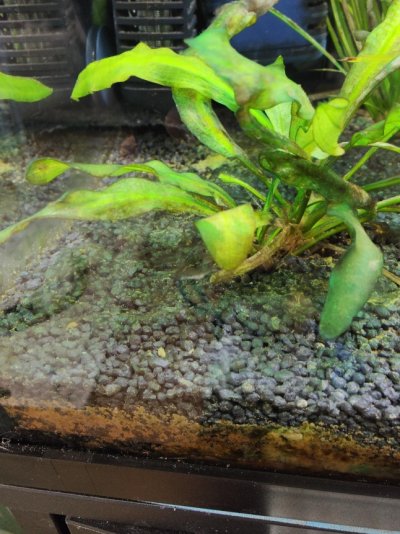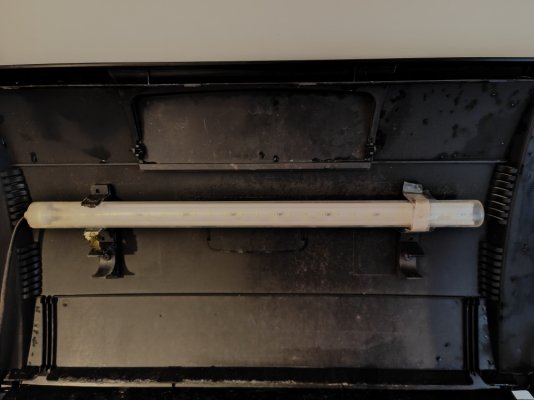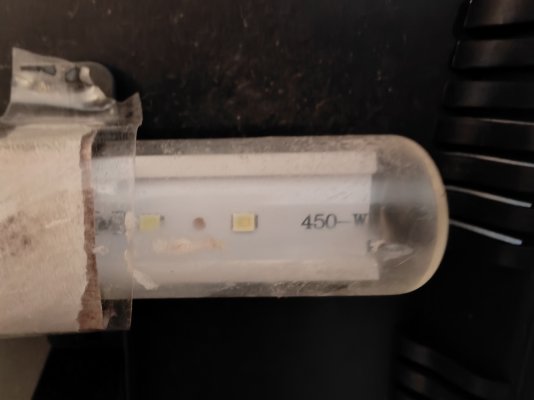Blue green algae (Cyanobacter bacteria) in a nice dark green colour form. It's a photosynthetic bacteria (bacteria that can use light to grow) that loves nutrients, red light, slow water movement and low oxygen levels.
Is the substrate a plant substrate?
What is the orange stuff in the substrate?
- Yes, its aquarium gravel with aquarium soil underneath (thats what the orange is)
How often do you normally do water changes and how much do you change?
-
i have a 60L tank. i would normally do around 20-40% once a week. While tryign to battle the algage, ive been doign around 20-40% every 2/3 days. This week, i have been doing around 20-30% daily to get as much out as i can.
Do you gravel clean the substrate when you do a water change?
-
yes, correct
Do you dechlorinate the new water before you add it to the tank?
-
yes
What sort of filter is on the tank?
-
i have 2 internal filters, one pointing upwards to disturb the water, one pointing alogn the gravel
How often and how do you clean the filter?
-
about once a month i give the filter media a deep clean in the extracted aquarium water
What sort of light unit is above the aquarium?
How old is the light unit?
What is the Kelvin rating (written as a number with a K after it, eg 6500K) of the globe/s?
- i have the light that came with the tank starter kit. the only written number i could see was the wattage (450). the lighting unit would now be about a year old
---------------------
Do big (75%) water changes and gravel clean the substrate every day for a couple of weeks. This will physically remove the Cyanobacteria and dilute any nutrients in the water and substrate, thus removing the food source for the bacteria. You can leave the live plants where they are and gravel clean around them.
Make sure any new water is free of chlorine/ chloramine before it's added to the tank.
Wipe down the glass each day to remove the stuff from the glass. You can gently wipe the stuff off the plant leaves with a sponge. You can also take the ornaments outside and hose them off.
Reduce the dry food going into the tank. Uneaten food, particularly dry food, encourages this stuff.
Increase water movement around the bottom of the tank.
Increase aeration/ surface turbulence to maximise oxygen levels in the water.
If the light unit has an old (more than 12 months) fluorescent globe, replace it with a new globe that has a 6500K rating. You should also replace the fluorescent starter whenever you replace a fluorescent globe.
If you have a LED light unit, try to set the colour spectrum (wavelength) to 6500K. You want equal parts red and blue light, with some green and white.
Give it a couple of weeks and see how it goes.


